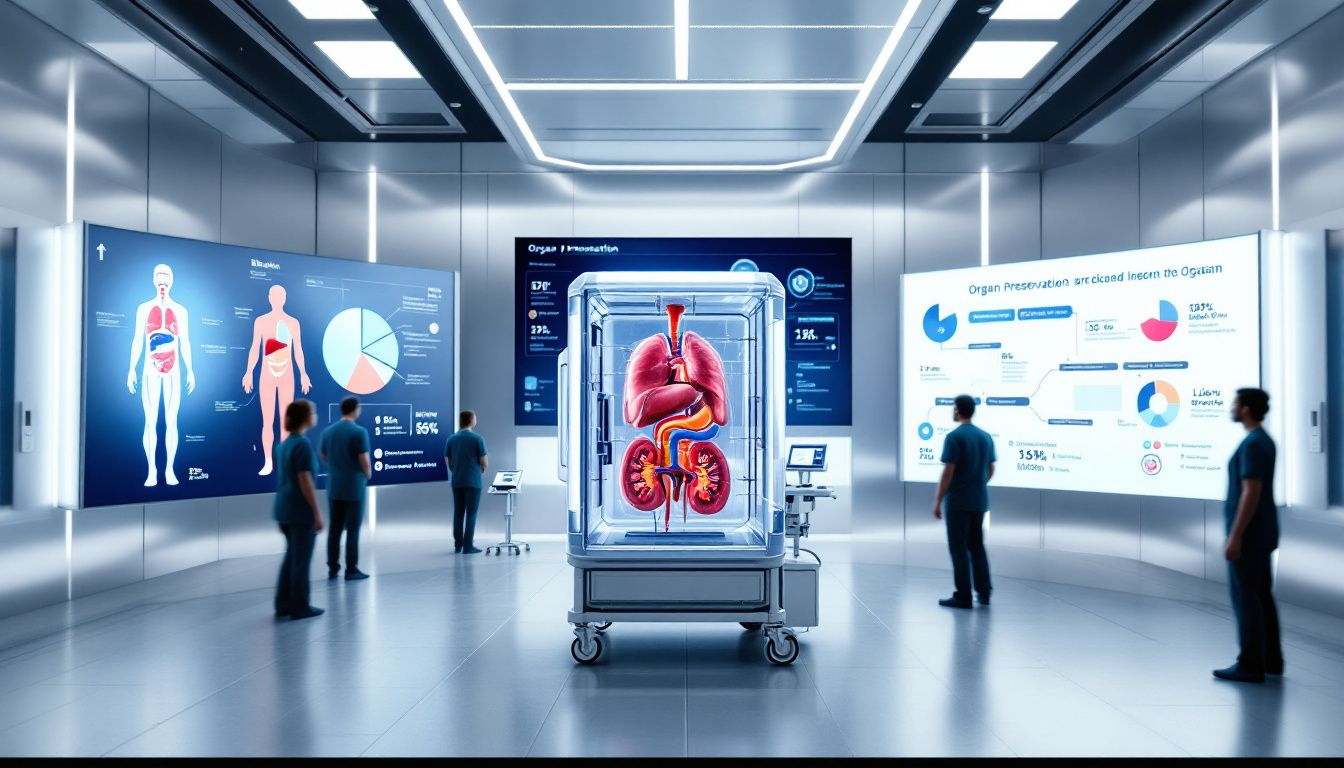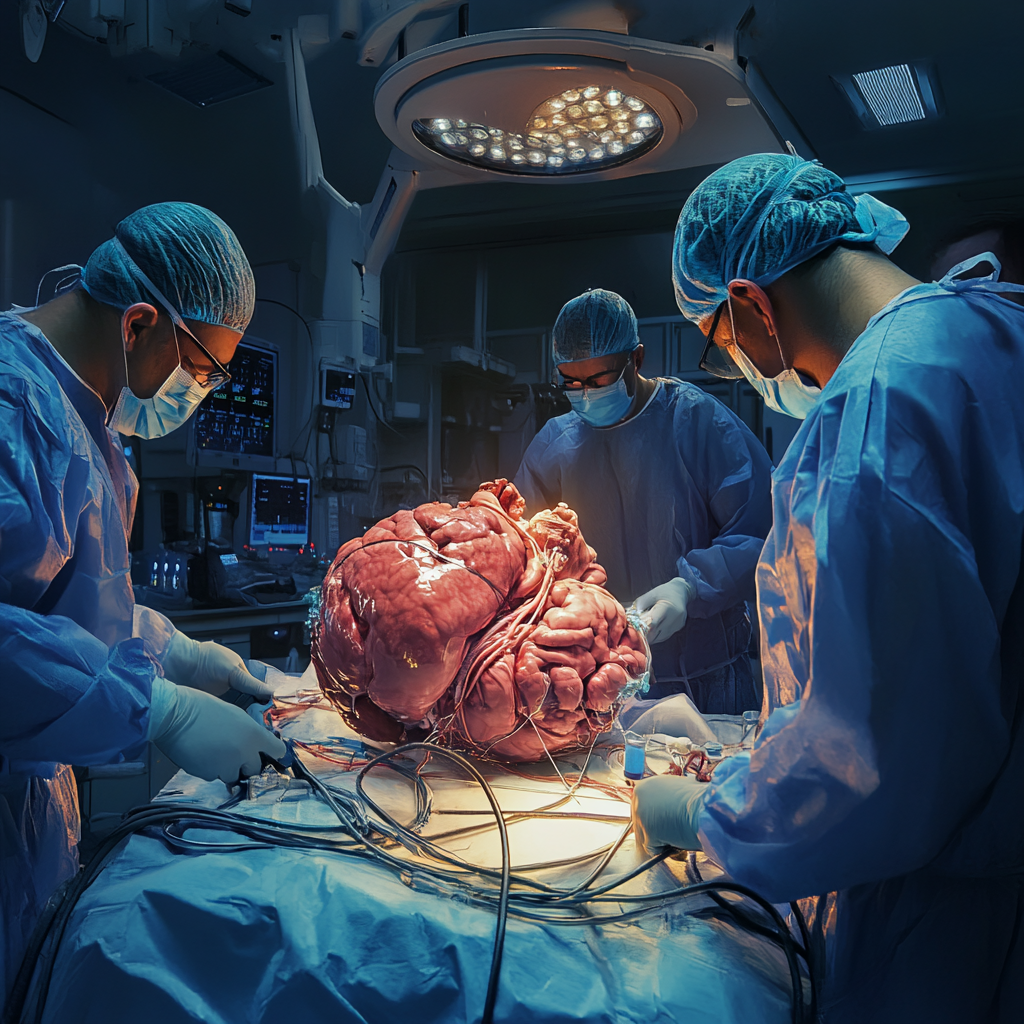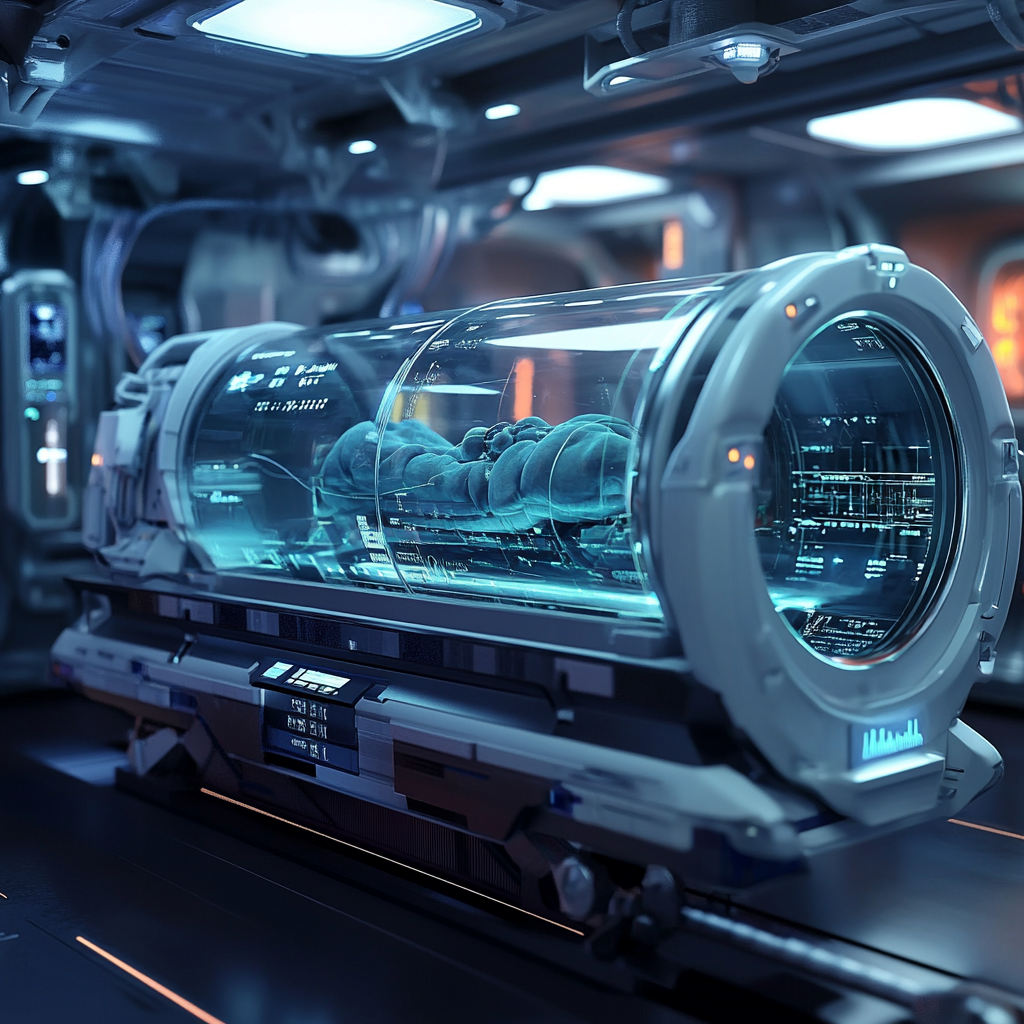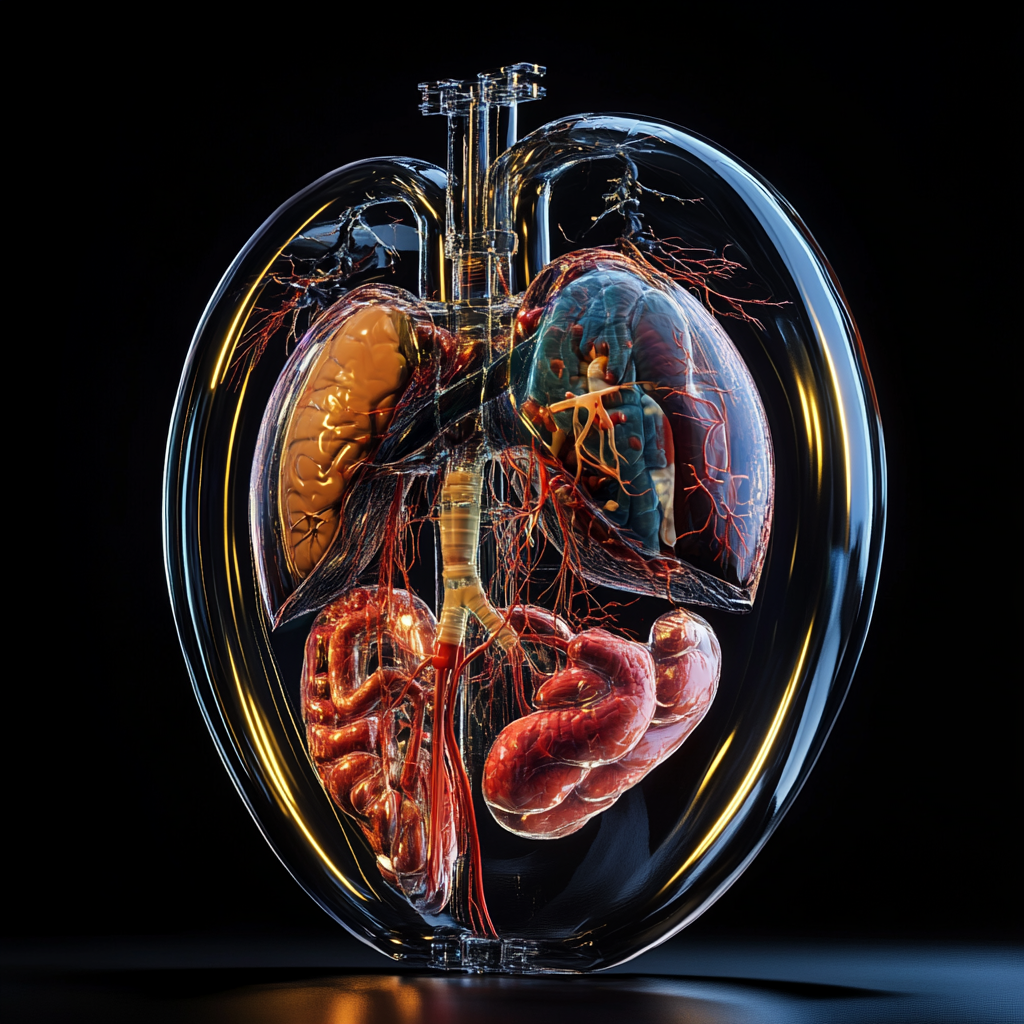How Organ Transport Networks Operate: Streamlined Processes for Lifesaving Transplants
Organ transport networks are crucial for enabling lifesaving transplants. These networks ensure that donor organs are swiftly and safely transported to recipients. Understanding how organ transport networks operate involves looking at the meticulous processes, advanced preservation techniques, and intricate logistics that make timely deliveries possible. This article explores the journey of donor organs, the preservation methods used, the various transportation modes, and the coordination among medical teams.
Key Takeaways
The transportation of donor organs requires meticulous coordination among medical teams to ensure optimal conditions and timely delivery for successful transplants.
Innovative preservation techniques and advanced technologies, such as dynamic hypothermic machine perfusion and real-time tracking systems, significantly enhance organ viability during transport.
Challenges in organ transport, including distance, environmental factors, and logistical issues, necessitate ongoing advancements and innovations to improve the overall efficiency and effectiveness of organ transplantation.
The Journey of Donor Organs

The journey of donor organs begins with a profound act of generosity—organ donation. When a tissue donor passes away, their organs and tissues are meticulously recovered to save the lives of those in desperate need. This process involves a series of coordinated steps, starting with the careful preservation of organs using special solutions and coolers to ensure their viability. Tissue donation is a vital part of this life-saving effort.
Each organ has a limited viability period outside the body, necessitating swift organ transport. Kidneys can last up to 24-36 hours, while hearts and lungs have a much shorter window of just 4-6 hours. During recovery, organs are maintained on artificial support systems to ensure blood flow and oxygenation until transport. This careful planning ensures that every organ reaches its recipient in optimal condition.
Commonly recovered organs include the heart, lungs, kidneys, livers, pancreas, and small intestines. Each of these organs embarks on a journey filled with hope and urgency, passing through the hands of skilled medical professionals dedicated to saving lives. The entire donation process, from recovery to transplantation, is a testament to the power of teamwork and the incredible advances in medical science.
Preservation Techniques for Viable Transplants
Maintaining donor organ viability during transport is crucial for successful transplantation. Cooling is the primary method used, reducing metabolic activity and extending the organ’s viability. Organs are typically preserved using special solutions and packed on ice, with the University of Wisconsin solution being particularly effective for liver preservation.
In addition to static cold storage (SCS), dynamic hypothermic machine perfusion (HMP) is gaining traction as a superior preservation method. HMP provides continuous nutrient and oxygen supply during storage, significantly enhancing organ viability compared to SCS. For certain organs, such as lungs and kidneys, machines are used during transport to maintain optimal conditions.
Innovations in preservation methods are constantly evolving. Advanced devices like the Paragonix LUNGguard maintain stable temperatures without using ice, minimizing potential damage during transport. Similarly, the TransMedics OCS Lung system keeps lungs warm and oxygenated, extending their viability beyond traditional methods. These advancements promise to improve the functionality and longevity of marginal organs, ultimately saving more lives.
Modes of Organ Transportation

Transporting donor organs swiftly and safely to transplant centers is a logistical marvel. Depending on the distance, various transportation methods are employed, including ambulances, helicopters, and airplanes. Private charter flights or commercial flights are often used to move organs transported from donation hospitals to transplant centers, ensuring they reach their destination as quickly as possible.
Emergency medical services often expedite organ transport in critical situations. Efficient organ transportation management minimizes waiting lists for transplant surgeries, maximizing the chances of each donated organ saving a life.
The entire process, from recovery to delivery, is a race against time, highlighting the importance of coordination and quick action.
Coordination Among Medical Teams
The successful transport and transplantation of donor organs rely heavily on the seamless coordination among multidisciplinary medical teams, including a transplant center. Physicians, surgeons, and researchers work together to ensure that each step of the process is meticulously planned and executed. This collaboration is often facilitated by international and national coordination centers, which enhance communication and cooperation among medical professionals.
Thorough documentation and scanning of each organ and its paperwork before and after transfer are crucial for maintaining a clear chain of custody. Enhanced communication tools have reduced case times and increased transplant rates. Effective coordination among transportation providers helps overcome logistical barriers and ensures timely delivery.
In this complex dance, every transplant team member plays a crucial role. Surgeons and the medical team at both the donor and intended recipient hospitals must be informed and prepared, with medications and special solutions ready to preserve the organ upon arrival. The dedication and expertise of these teams are what ultimately make successful transplants possible, turning the gift of life into a reality for countless patients.
Communication Systems in Organ Transport
Effective communication systems are the backbone of successful organ transport networks. Real-time communication minimizes delays between organ procurement and transplantation. Dedicated mobile applications enhance communication efficiency among medical teams, reducing redundant and conflicting messaging.
Advanced organ tracking systems, such as VantagePoint™, provide secure tracking without the need for personnel to be present, increasing efficiency and safety. These technologies allow teams to monitor the organ’s location during transit, ensuring that it reaches the operating rooms in a timely manner. Real-time monitoring and GPS tracking allow medical teams to follow every step of the organ’s journey, from recovery to transplantation.
The integration of these communication systems has revolutionized the organ transport process. Instant updates and real-time data from these tools ensure that every organ arrives in optimal condition, ready to save a life. The reliability and efficiency brought by these advancements are crucial in a field where every second counts.
Did you know that you can get from Manhattan to JFK in under 5 minutes without driving?
Blade offers seamless helicopter transfers from our West 30th Street Lounge in Manhattan to JFK Airport in just 5 minutes from $195 per seat.
Skip the traffic and ditch the stress with Blade's year-round airport service.

Regulatory and Safety Protocols
Regulatory and safety protocols are the bedrock of the organ transport process. Each organ must be carefully labeled appropriately, and documentation must be scanned both before departure and upon arrival at the destination. This meticulous process ensures that organs are handled safely and correctly throughout their journey.
Real-time temperature data is crucial for monitoring the conditions of organs during transportation, ensuring their viability for transplantation. The use of temperature monitoring in organ transport devices guarantees that organs remain in optimal conditions throughout the journey.
Adhering to these regulatory and safety protocols is vital for understanding organ transport protocols, ensuring the integrity and safety of carefully preserved donor organs, ultimately saving more lives.
Case Study: Successful Organ Transport

A groundbreaking milestone in organ transplantation was achieved by Massachusetts General Hospital, where a genetically-edited pig kidney was successfully transplanted into a living recipient. This procedure, known as xenotransplantation, showcases the potential to address the organ shortage crisis. The success of this transplant emphasizes the critical role that effective organ transport networks play in improving transplant outcomes.
Innovative approaches like this highlight future possibilities for organ transplantation and the ongoing evolution of transport methodologies. As we look to the future, such advancements promise to increase the availability of organs for patients in need, offering hope to those waiting for a second chance at life.
The Role of Technology in Organ Transport

Technology plays a pivotal role in enhancing the reliability and efficiency of organ transportation. Devices like the TransMedics system utilize wireless technology to monitor organs during transport, ensuring they remain in optimal conditions. These advancements are designed to be future-proof, with compatibility for 5G networks to handle large data volumes.
By leveraging these technological innovations, the overall organ transport process is significantly improved. Real-time monitoring and advanced tracking systems ensure the timely and safe delivery of organs to recipients, ultimately saving more lives.
The integration of these tools into organ transport networks represents a significant leap forward in the field of transplantation.
Challenges in Organ Transport
Despite the advances in organ transport technology, several challenges persist. One of the main hurdles is the distance between donor and recipient hospitals, as organs must be transplanted within strict time frames to ensure viability. New transportation technologies are essential for addressing the increased distances that organ recovery teams must travel due to changes in allocation processes.
Environmental factors, such as extreme temperatures, can adversely affect the condition of donor organs during transit. Logistical challenges, including scheduling flights and securing proper transportation, often lead to delays in transplant procedures. Additionally, traffic conditions can unexpectedly hinder timely delivery, risking the health of transplant candidates.
Analyzing transportation difficulties from both global and local perspectives is essential for improving organ procurement logistics. Addressing these challenges optimizes the organ transport process, ensuring every donated organ has the best chance of saving a life.
Did you know that you can get from Manhattan to JFK in under 5 minutes without driving?
Blade offers seamless helicopter transfers from our West 30th Street Lounge in Manhattan to JFK Airport in just 5 minutes from $195 per seat.
Skip the traffic and ditch the stress with Blade's year-round airport service.

Future Innovations in Organ Transport

The future of organ transport is filled with promising innovations that could revolutionize the field. Emerging technologies are set to transform organ transport, paving the way for better outcomes for transplant recipients. Ongoing efforts aim to enhance the recovery, preservation, and rehabilitation of donor organs, optimizing transplant utilization.
The role of AI in organ transport logistics is poised to revolutionize transplantation by improving donor-recipient matching and optimizing immunosuppression strategies. Additionally, creating a broader organ allocation system could allow equitable access for patients in areas with lower donation rates. These advancements point toward future possibilities that could increase the availability of organs for patients in need.
Embracing these innovations, the field of organ transport is set to achieve even greater success, offering hope to countless patients awaiting a second chance at life.
How to Support Organ Donation Efforts
Supporting organ donation efforts is crucial in saving lives. Becoming a registered organ donor is the first step in this process. Making financial contributions to organizations like Donate Life California helps expand outreach and debunk myths about organ donation. Starting an eCampaign can inspire community members to register as organ donors, providing a personalized platform for outreach.
Shopping via AmazonSmile allows individuals to support organ donation charities without any additional cost, as a portion of purchases is donated. Increasing the acceptance of higher-risk or marginal organs could help reduce the number of patients dying while waiting for a transplant. By supporting these efforts, you contribute to the availability of organs for transplant, ultimately saving more lives.
Bottom Line: How Organ Transport Networks Operate: Streamlined Processes for Lifesaving Transplants
In conclusion, the journey of donor organs from recovery to successful transplantation is a complex and meticulously coordinated process. Preservation techniques, efficient transportation methods, and advanced communication systems all play crucial roles in ensuring the viability of organs for transplantation. Regulatory and safety protocols further safeguard the integrity of these lifesaving gifts.
As we look to the future, innovations in technology and preservation methods promise to enhance the organ transport process even further. By supporting organ donation efforts, each of us can play a part in this incredible journey, offering hope and a second chance at life to those in need.
FAQs about How Organ Transport Networks Operate
What are the primary methods of preserving donor organs during transport?
The primary methods for preserving donor organs during transport are static cold storage (SCS) and dynamic hypothermic machine perfusion (HMP), utilizing specialized solutions and coolers to ensure organ viability. Proper preservation techniques are crucial for successful transplantation outcomes.
How are donor organs transported to transplant centers?
Donor organs are transported to transplant centers via ambulances, helicopters, or airplanes, with the method chosen based on the distance involved. This ensures timely delivery for successful transplantation.
What role does technology play in organ transport?
Technology plays a critical role in ensuring the reliability and safety of organ transport by utilizing real-time monitoring, wireless devices, and advanced tracking systems. This innovation facilitates timely delivery, ultimately improving transplant outcomes.
What challenges are faced in organ transport?
Organ transport faces challenges such as the distance between donor and recipient hospitals, environmental factors, logistical scheduling for flights, and traffic conditions. Addressing these issues is essential for timely and effective organ transplantation.
How can individuals support organ donation efforts?
Individuals can effectively support organ donation efforts by registering as donors and making financial contributions to relevant organizations. Additionally, participating in eCampaigns and utilizing AmazonSmile to benefit these causes can further enhance their support.
Disclaimer:
Please be aware that the content on this page has been generated by using artificial intelligence language models and may contain errors, inconsistencies, or outdated information. It is provided as-is without any warranties or guarantees of accuracy. We strongly recommend using this content as a starting point for further research. We disclaim any liability for damages or losses resulting from the use or reliance on this content.